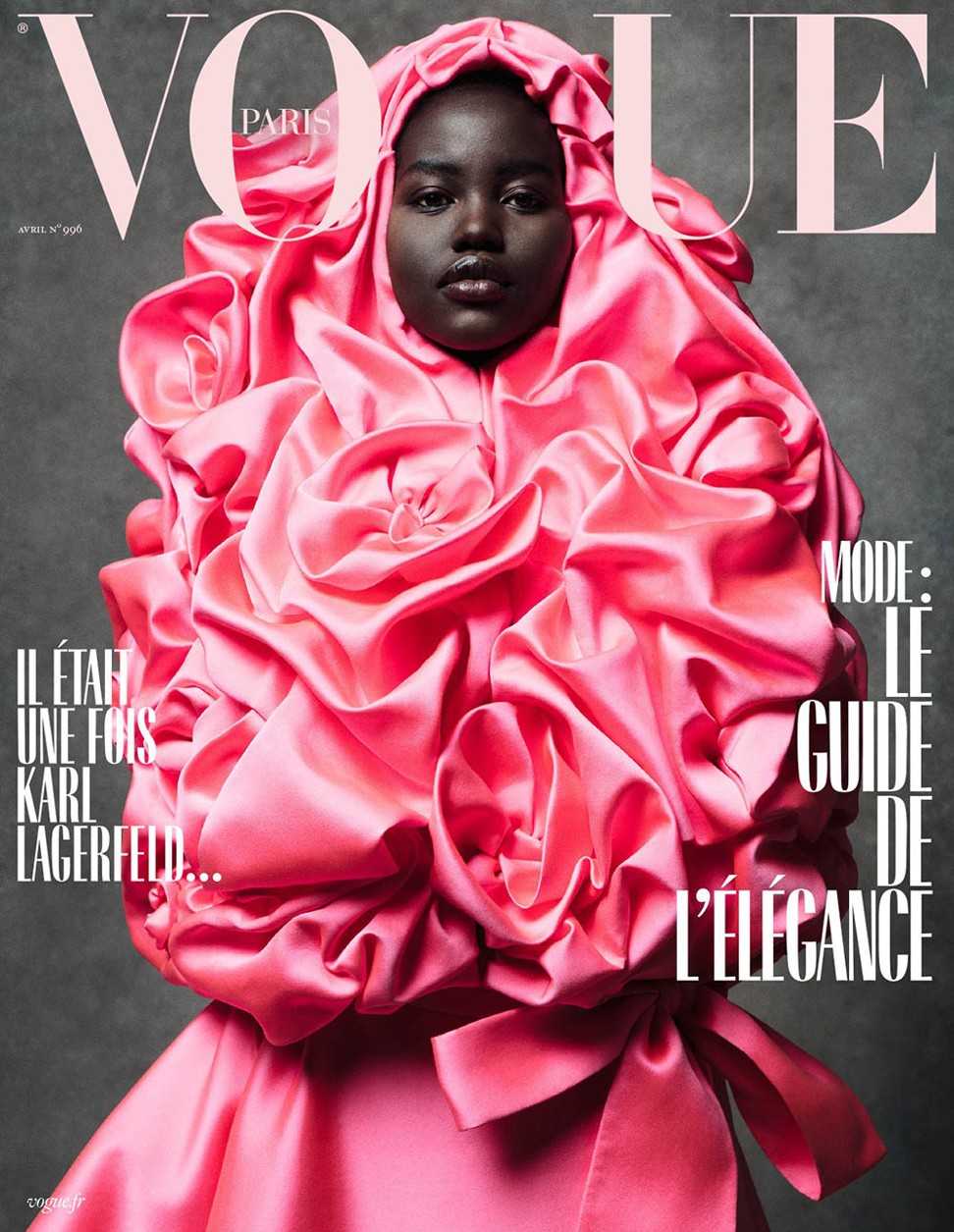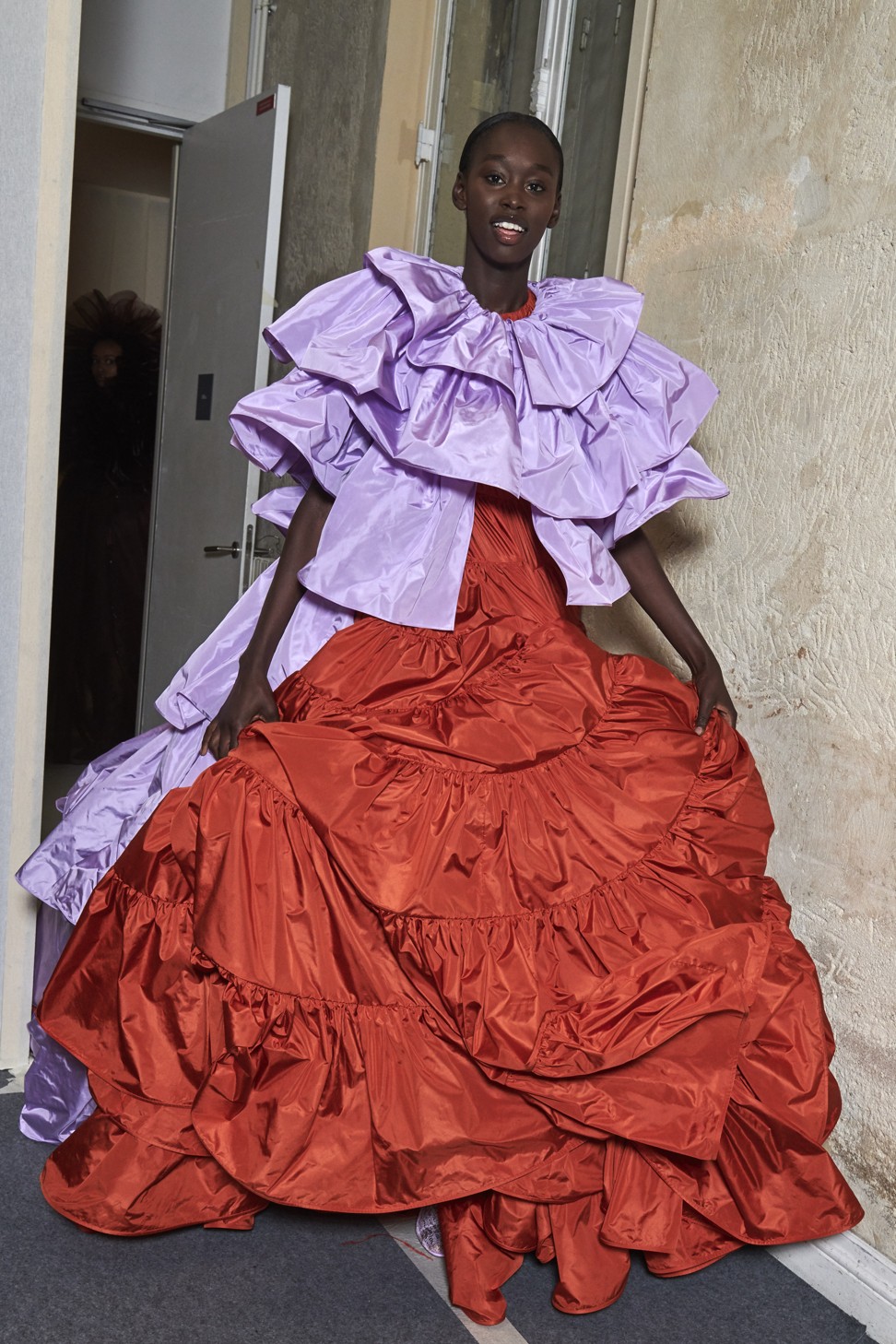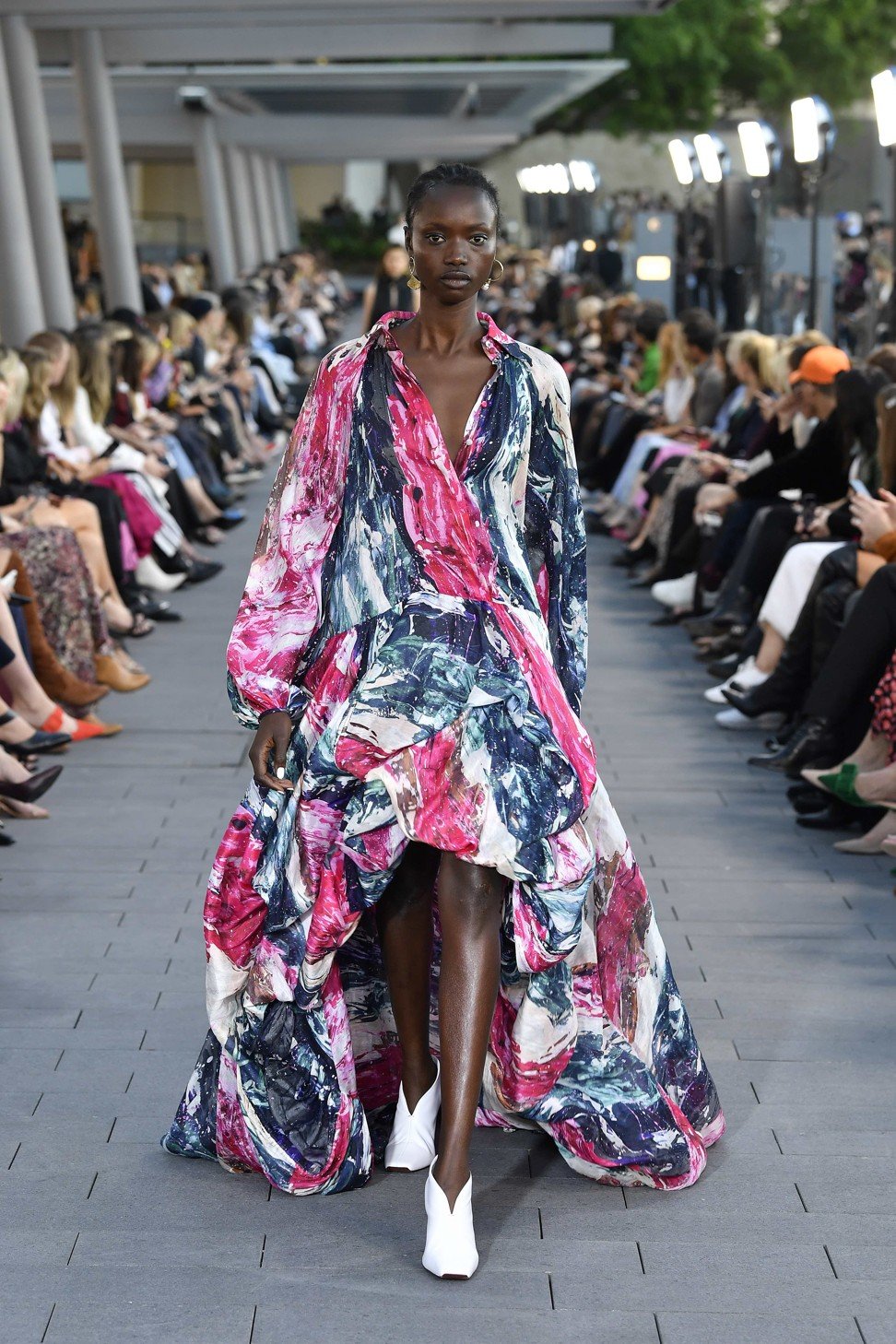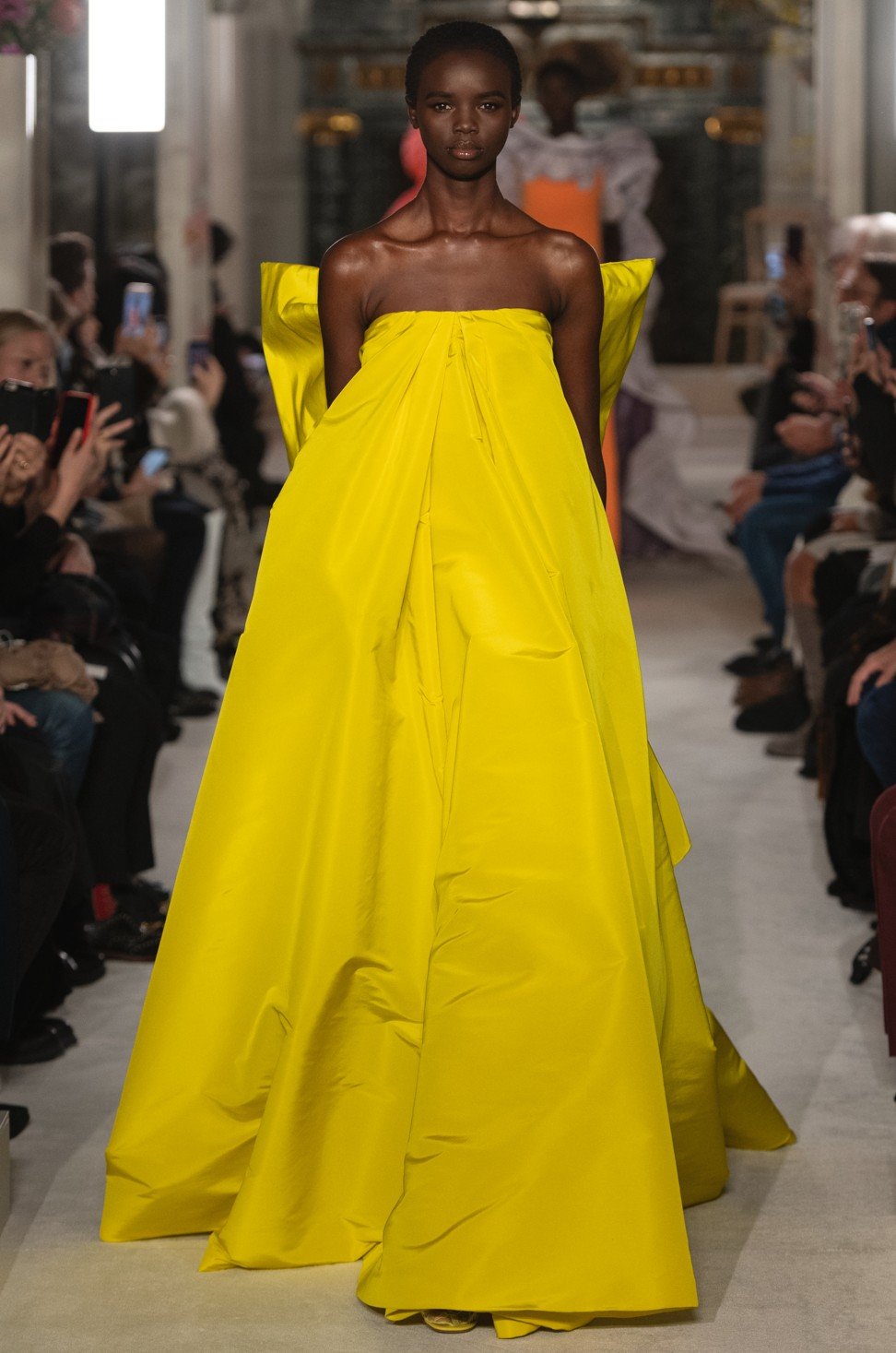
From refugee camp to runway, African fashion models making big strides on the world’s catwalks
- Sudanese former child refugees have emerged as a force in international modelling, led by teenage sensation Adut Akech Bior, as fashion has embraced diversity
- They are following a path first laid by Somali-American model Iman, Sudanese-British Alek Wek, and Ajak Deng, the first Sudanese-Australian model to emerge
From Gemma Ward to Abbey Lee Kershaw, Catherine McNeil and Miranda Kerr, 12 years ago Australia’s most successful modelling exports were either blue-eyed blondes or porcelain-skinned brunettes.
Today a new cadre of Australian supermodels has emerged on the international stage: jet black, impossibly long-limbed Africans – specifically, Sudanese, most of whom arrived in the country as child refugees fleeing civil war in South Sudan.
At least eight Sudanese-Australian models walked in the autumn 2019 show season: Adut Akech Bior, Achol Ajak Yong (aka “Akiima”), Ajak Deng, Sabah Koj, Duckie Thot, Aweng Chuol, Prince Del and Adau Mornyang. They represent the vanguard of a group of at least 35 African-Australian models listed on the books of Australian model agencies.

Positive news coverage of their success has been in dramatic contrast to the spate of negative headlines in the Australian media over the past 18 months about the rise of African street violence in Melbourne, said to have been perpetrated by “gangs” of Sudanese-Australian youths – a claim that has been disputed.
None has been more successful than the 19-year-old Bior who, in the three years since she first set foot on an international catwalk in September 2016, for Saint Laurent, has become one of fashion’s most in-demand models.


She has appeared on the covers of the Paris, Italian, British, Australian and Korean editions of Vogue, walked for nearly every major luxury brand, and booked campaigns for Saint Laurent, Valentino, Fendi, Versace, Moschino, Coach and Chanel Beauty.
In 2018 Bior was named model of the year by online modelling industry authority models.com and the Australian Fashion Laureate awards; included in The Business of Fashion BoF 500 list of movers and shakers who are shaping the fashion industry; and listed by Time magazine among its 25 Most Influential Teens of 2018.
The UNHCR has flagged Bior’s achievements in its promotional materials, and Bior herself uses her social media channels – including her Instagram account, which has more than 430,000 followers – to draw attention to the plight of refugees.
Rising teen Nigerian-Korean model is a pioneer in Asian fashion
According to industry insiders, Bior has changed the game for other Sudanese modelling hopefuls in Australia.
He adds: “There was a time, especially in Australia, when I felt that clients weren’t really open to booking models who didn’t have European backgrounds, but I think that time is well and truly over. Once it was shown that [Bior] was very much an in-demand model, I think a lot of agencies took on more African models.”

Chadwick represents 14 African-Australian models, 10 of them South Sudanese. They include Thot, who rose to prominence in 2013 after placing third in reality-television series Australia’s Next Top Model, and two Sudanese men, newcomer Zac Panyar and Prince Del – the latter the most successful male Sudanese-Australian model to have emerged to date, and a regular on international men’s fashion catwalks.
Bior’s story is markedly different to those of Thot and Deng, both of whom have complained publicly about a lack of work opportunities for black models in Australia.
The first Sudanese-Australian model to make waves internationally, Deng, who is 29, came to the attention of the fashion world in 2009, became an international catwalk regular, made the covers of i-D magazine and Vogue Gioiello, and booked campaigns for, among others, Kenzo, Calvin Klein and prestigious magazines including the US and Italian editions of Vogue.
Refugees, they’re resilient people. What can I say? I’m not surprised that there’s a tonne of refugee models in this industry. But it’s incredible
Deng briefly quit modelling in 2016, having complained of racism in the fashion industry. In February 2014, she claimed on Twitter that she had been “kicked out of” the autumn 2014 show of French luxury house Balmain “for being black”. In 2010, she told Vogue Italia that she had been told by some in Australia, “Sorry they sent you all the way here, we don’t work with black models”.
According to Stephen Bucknall, managing director of Melbourne’s FRM Model Management, for all their international success, most Sudanese-Australian models still don’t feature in big-bucks advertising campaigns in Australia. That said, Bior has shot campaigns for Australian retailers Forever New and David Jones and Thot has been featured in a campaign for mainstream Australian underwear brand Bonds.
“I still don't see them as major faces of big brands [locally],” says Bucknall, who nevertheless concedes there has been a big increase in interest in Sudanese models in recent years.

“There’s been a big jump forward [in the use of Sudanese models] – definitely 100 per cent,” says Bucknall, who could easily lay claim to having pioneered the Sudanese-Australian modelling industry; he was heavily involved in the Miss South Sudan Australia beauty pageant, which was founded in Melbourne in 2007 and crowned Deng as its winner in 2008. Her prize pool included a contract with FRM Management.
Bucknall also launched the careers of Thot, her sister, Nikki Thot, and Koj, all of whom have gone on to be represented by larger agencies.
He recently signed Deng’s brother, Majok Deng, who has spoken of his desire to be a role model for young Sudanese-Australian men.

Among the many new faces to have appeared on catwalks are a score of Sudanese refugees who have settled in other parts of the world, including Anok Yai, Grace Bol, Shanelle Nyasiase, Angok Mayen and George Okeny.
Born and raised in Kenya’s Kakuma Refugee Camp, where Bior also grew up, Aden migrated to the United States when she was seven years old, and in 2016 became the first hijab-wearing model to compete in the Miss Minnesota USA pageant, where she was a semi-finalist.
Since signed to IMG Models, she has gone on to become the first hijab-wearing model to appear on the cover of British Vogue. She has also made the covers of British Elle and CR Fashion Book. Earlier this year she became the first model to appear in Sports Illustrated’s annual swimsuit issue in a hijab and burkini.
In September, Aden will add another magazine cover to her portfolio – for a yet-to-be-revealed Australian fashion title. The cover shoot took place in Sydney in mid-May, when Aden also attended Mercedes-Benz Fashion Week Australia.

“The beautiful thing about this industry is it really celebrates women of all different backgrounds,” Aden told the South China Morning Post in Sydney.
“I’m so proud to say that I have the women who came before me to thank – you know, the Naomis, the Imans, the women of colour who paved the way for me to be the first hijab-wearing woman [in fashion]. And I’m excited to pave the way for the next wave of women.
“Refugees, they’re resilient people. What can I say? I’m not surprised that there’s a tonne of refugee models in this industry. But it’s incredible.”


